The Culture Map
Marton Trencseni - Fri 22 July 2022 - Leadership
The Culture Map by Erin Meyer is a great business management book on how to communicate and manage people from different cultures, or just people with different ways of working. These are my notes of the book, which I recommend you should buy right now.
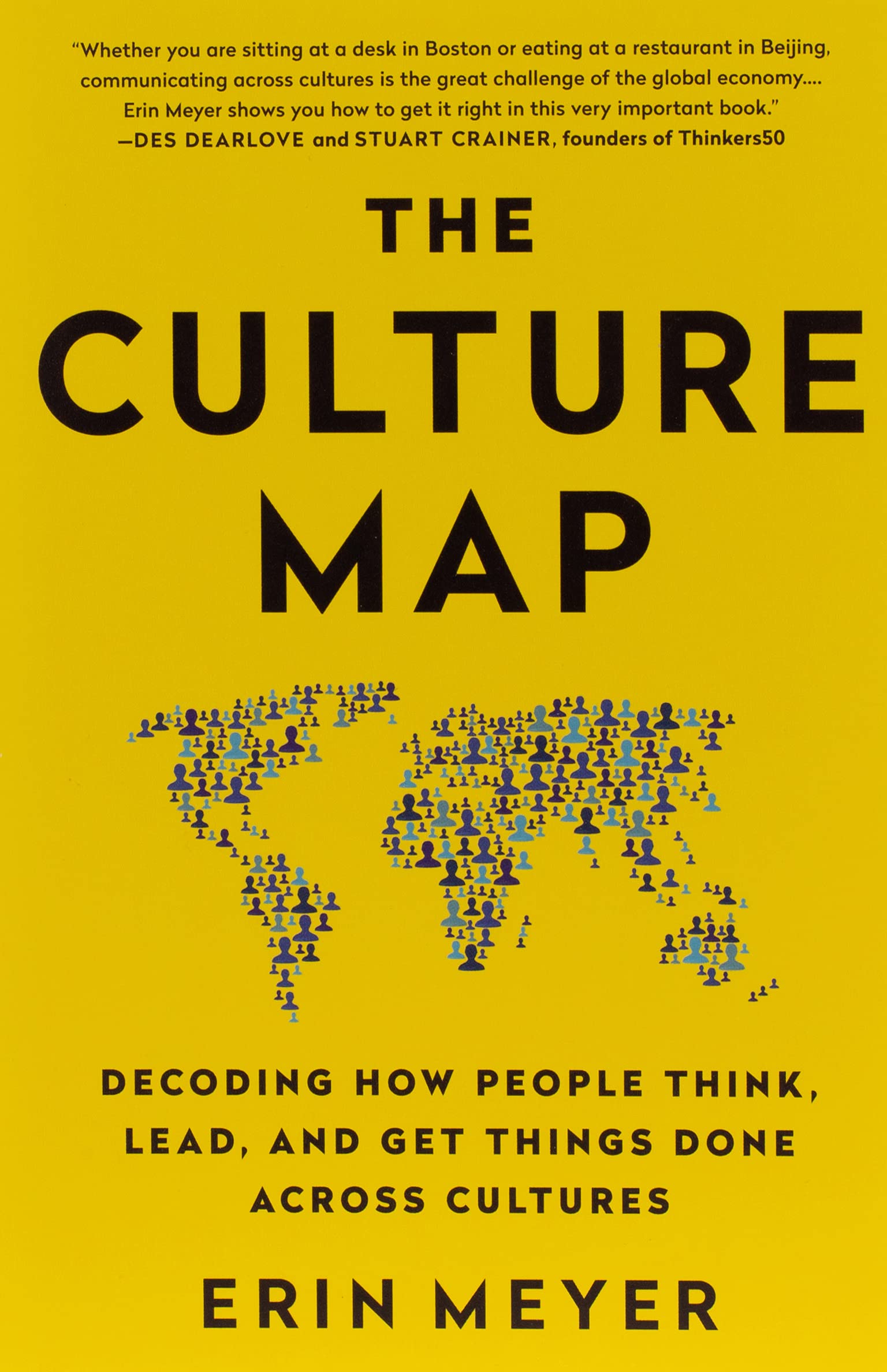
Introduction
The Culture Map by Erin Meyer is a system of 8 scales which can be used to determine how cultures vary along a spectrum. The scales can be used to analyse one culture relative to another and decode how culture influences your international collaborations. If you take the example of an Israeli executive who has been appointed to manage a newly purchased factory in Russia, and compare where both countries are on the scale, you can see where difficulties could arise.
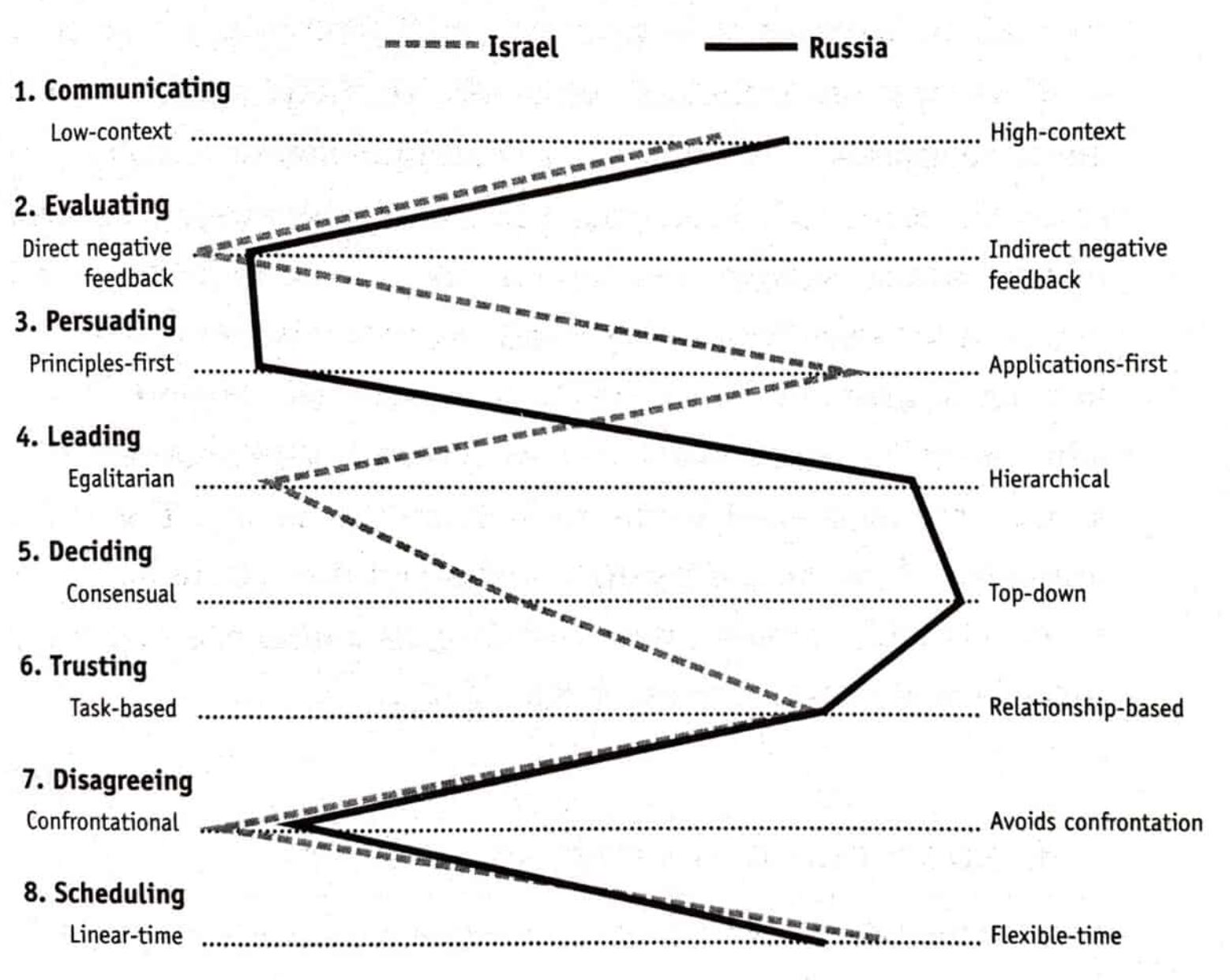
The author's website has a non-free Culture Mapping Tool that draws the above plot for the countries selected, ie. the country composition of your team(s).
Let's now look at the 8 dimensions considered in the book.
Communicating
Low context: say it like it is, precise, simple clear, intended to be taken at face value.
High context: messages are nuanced, impled, need to be "decoded" or read between the lines.
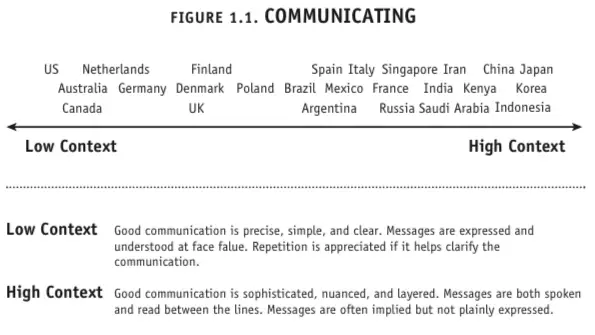
Americans are the most explicit or low-context culture there is (low-context meaning their conversation assumes relatively little intuitive understanding). This is not surprising for a young country composed of immigrants that prides itself on straight-talking. Japan and other East Asian countries represent the other extreme.
Meyer offers strategies for negotiating these differences, but the most basic solution, as with all scales discussed in the book, is simply to be aware. Thus Americans in Japan should pay attention to what's not being said; while Japanese in America should brace themselves for direct language.
Evaluating
How directly (negative) feedback is given. Cultures that are direct wrt communication are not always direct wrt feedback, eg. US.
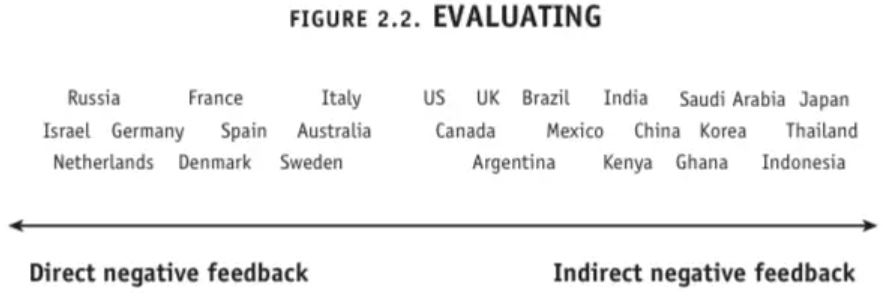
Americans may be very explicit communicators, but they are in the middle of the spectrum when it comes to giving negative feedback — as anyone who as been to an American school knows. Israelis, Russians, and Dutch are among the most direct when it comes to negative feedback. Japanese are among the most indirect.
Persuading
Concept first: like in a prussian school, first learn the theory, then apply it. In a business setting, this means first give theoretical arguments, then get to the actual business application.
Application first: focus on solving the problem at hand, and worry about the theory later. In a business setting, this means starting with the proposed action item, and then explaning why it's a good idea.
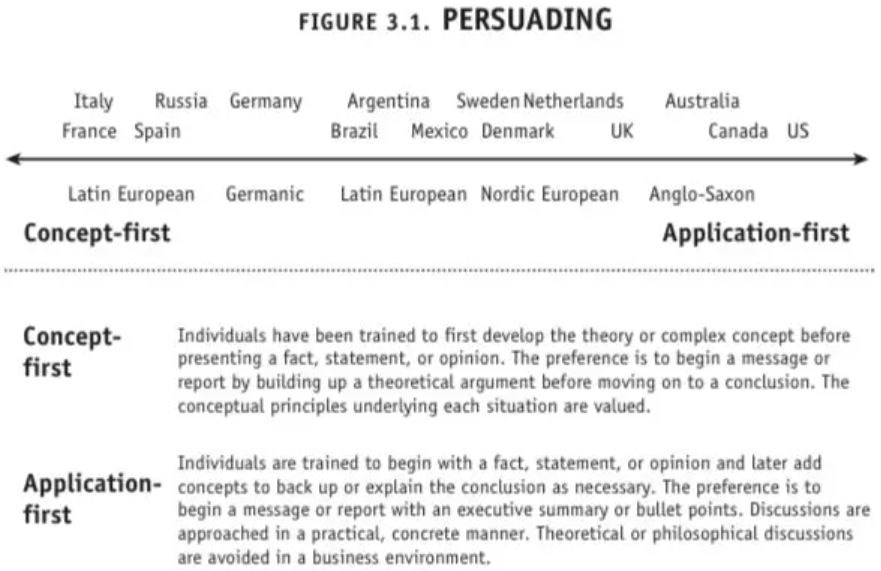
Some cultures, notably the French and Italians, tend toward deductive arguments, focusing on theories and complex concepts before presenting a fact, statement, or opinion. Others, notably Anglo-Saxon cultures, tend toward inductive arguments, starting with focusing first on practical application before moving to theory.
This trait shows up in everything from how people give presentations or lead meetings to how they write emails.
Leading
Egalitarian: the manager is a member of the team, a servant to the team. Decisions are based with more involvement from the team. Flat structure, titles are not that important internally.
Hierarchical: the manager is a boss, and tells team members what to do—and team members expect to be told what to do. Status and titles are important.
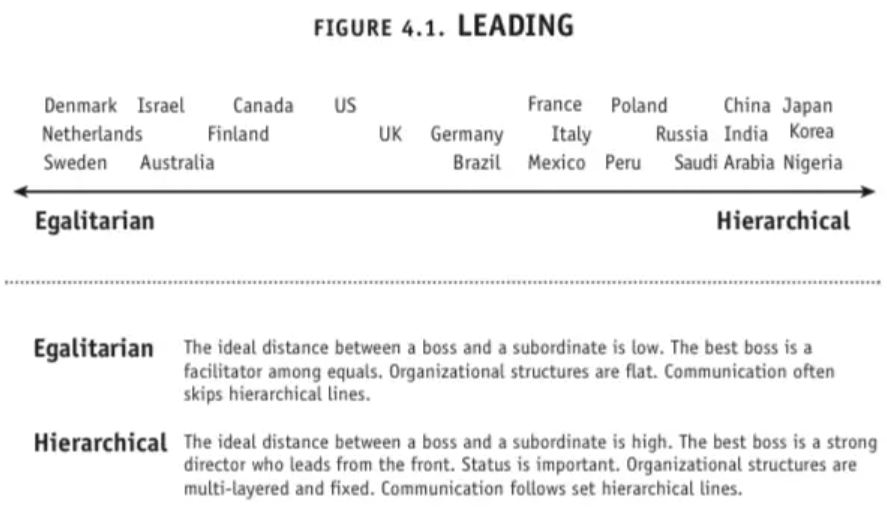
"In Denmark, it is understood that the managing director is one of the guys, just two small steps up from the janitor," a Danish executive told Meyer. This represents one extreme in attitudes toward leadership. On the other side of the spectrum in countries like Japan and Korea, however, the ideal boss should stand far above the workers at the top of a hierarchy. America's outlook on leadership falls somewhere in the middle.
Deciding
Consensual: team makes decisions together, as a quorum.
Top-down: the boss makes decisions and lets everybody know.

How organizations make decisions relates closely to how they view leadership, but with some important differences.
Notably, while Japan has a very hierarchical leadership system, it has a very consensual decision-making system. This is the famous ringi system, which involves building consensus at a lower level before bringing a proposal to a higher level, thus enabling broad corporate consensus.
Note: it's possible to have (a) an egalitarian team, where the manager doesn't tell people exactly what to do. It's possible to have a hierarchical structure with (b) consensual decision making, or (c) top-down decision making. In case (a) decision making on most issues is delegated to team members because of trust. In (b), decisions are made together, but then the managers tells everybody what to do. In (c), the manager decides on his own and then tells everybody what to do.
Trusting
Task-based: business relationships are just that, and do not require or assume personal friendship. Business partners may not trust each other (completely), but believe that contracts and the legal system creates boundary conditions that channels the other party to do their part and protect them if not.
Relationship-based: business relationships are only established with or after creating a personal connection and some personal trust, like getting to know each other, having lunch or dinner, going out for drinks, or in some cultures, getting connected to each other through trusted parties.
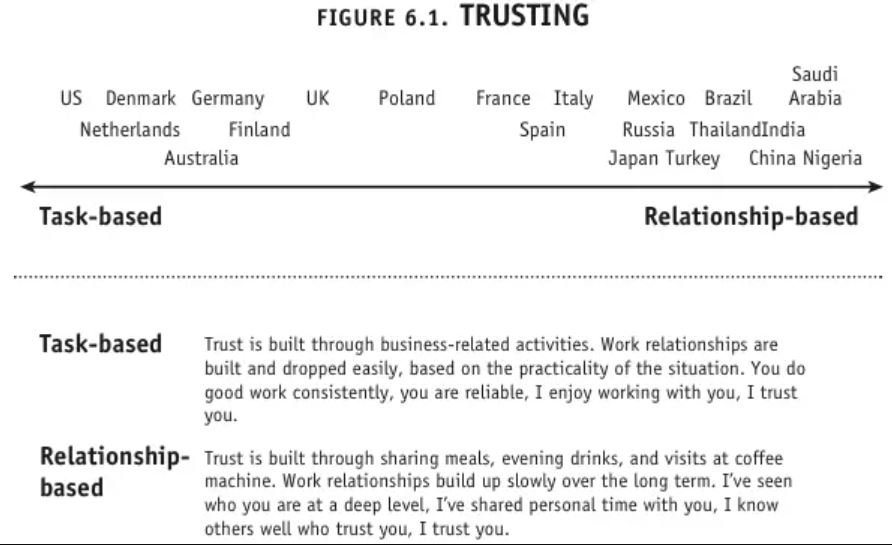
In some cultures, notably America, people don't worry so much about trusting each other because they trust their legal system to enforce contracts, and so business negotiations focus on what's practical.
In others, including many emerging market economies but also to a lesser extent Western Europe, personal relationships are much more important, in part because people don't trust their legal system to enforce contracts.
Disagreeing
Confrontational: open confrontation/disagreement is okay, and won't hurt the professional/personal relationship.
Non-confrontational: open confrontation/disagreement is seen as unproductive and/or impolite.
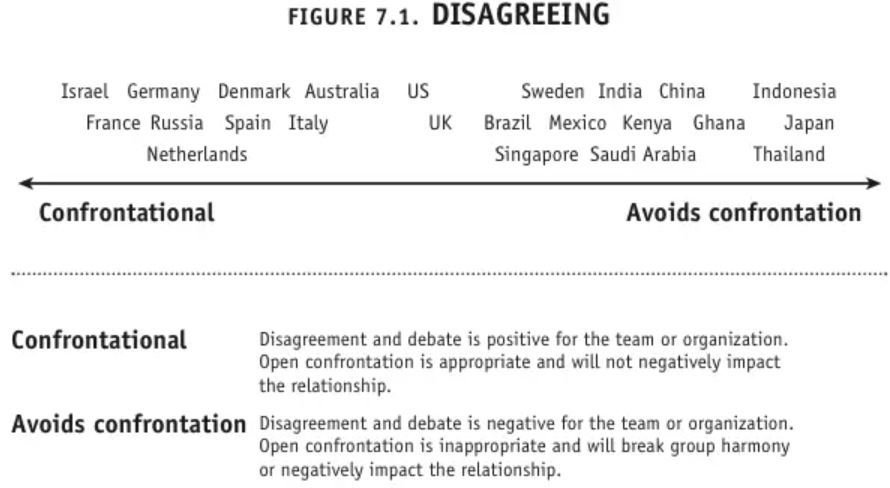
Some cultures embrace confrontation while others avoid it. This scale looks a lot like the scale showing the directness of negative feedback, though with some differences, such as Sweden being further to the left (direct) on negative feedback and further to the right (avoiding confrontation) on disagreeing.
Scheduling
Linear time: 10AM means 10AM, a few minutes late is okay. Time estimates are assumed to be somewhat reliable and taken seriously.
Flexible time: 10AM can mean anything from 10AM to 12PM. Appointment timings and time estimates should not be taken too seriously.

That different cultures treat time differently is one of the most common observations for anyone working or even traveling abroad. On one extreme you've got the exceedingly precise Germans and Swiss; Americans fall relatively close to this end of the spectrum; Western Europeans and Latin Americans tend to be more flexible; Africa, the Middle East, and India are extremely flexible.